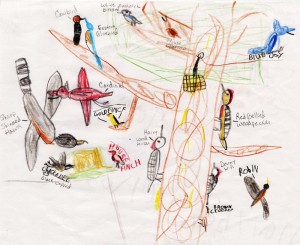Here are 5 examples of citizen scientists programs across the country.
1) Cornell Lab of Ornithology Citizen Science program
This is a set of kid-friendly research projects on all things bird-related, from pigeons to feeder-watching to a middle school curriculum called BirdSleuth. Students can count birds and upload data using eBird and the Great Backyard Bird Count, promote urban conservation through Celebrate Urban Birds, and use photo-tagging tools to help scientists sort 8 million NestCam images. The Cornell Lab of Ornithology has also created SciencePipes, a free site that allows users to access biodiversity data, create visual representations of that data, and embed them into their own Web pages.
2) Encyclopedia of Life
The project encourages students, teachers, and scientists around the world to document as many of the earth's roughly 1.9 million species as possible. Entry points for students include the Bioblitz -- or local species inventory, which allows students to upload their findings and try classroom activities -- and the Field Guide tool, a way to organize species information based on location. The site (free and Creative-Commons licensed) also provides educational podcasts and examples of model projects.
3) DiscoverLife
The Bee Hunt and the Lost Ladybug Project are two limbs of the nonprofit that helps lead step-by-step ecological research projects via simple Web tools. In order to figure out why some ladybug populations are booming while others are nearing extinction, kids and teachers can spot and upload photos of ladybugs in their local communities and check out map tools and educational materials. The Bee Hunt uses similar methods to determine the effect of climate change on various pollinators.
4) Lewis Center for Educational Research's Academy for Academic Excellence
At this charter school in Apple Valley, California, kids monitor telescopes and rockets -- among many other real-world, project-based activities -- and send their observations straight to NASA. NASA's Goldstone Apple Valley Radio Telescope, which now officially belongs to the Lewis Center's school, is open to students and teachers across the country to use as a learning tool. Participating students get a grasp of radio astronomy, teachers receive professional development training, and NASA gets to take home information about objects in the universe.
5) Project BudBurst
A national field campaign to collect ecological data about the flowering and fruiting of plants, is a way for students (and adults) to learn about the effects of global warming from their own backyards. Participants in all 50 states have recorded their observations and sent them into the BudBurst results database. A branch of the campaign, BudBurst Buddies, is designed for young learners, complete with friendly characters, an observation journal, and certificate of completion if they make at least four contributions.



